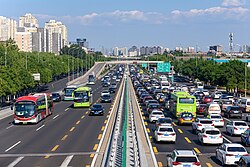

**40% Import Tax on Pre-owned Vehicles: Effects on Automotive Sector and Possible Reforms**
The introduction of a 40% import tax on pre-owned vehicles has become a prominent policy decision impacting the automotive sector across numerous nations. This tax is frequently enacted to safeguard local car manufacturers, minimize the influx of older vehicles that might not align with environmental regulations, and stimulate the purchase of new, domestically produced cars. Nonetheless, the repercussions of this tax are complex, affecting various parties within the sector and the larger economy.
**Effects on the Automotive Sector**
1. **Local Manufacturers**: The main recipients of the import tax are local car manufacturers. By increasing the cost of imported pre-owned vehicles, the tax prompts consumers to explore purchasing new cars made locally, potentially enhancing sales and bolstering local employment.
2. **Pre-owned Car Market**: The tax has a significant effect on the pre-owned car market, usually resulting in higher costs for imported pre-owned vehicles. This may limit the availability of reasonably priced cars for consumers who are unable to buy new vehicles, potentially contracting the pre-owned car market.
3. **Purchasers**: For purchasers, the tax may result in heightened expenses when acquiring a vehicle. Individuals who depend on affordable pre-owned cars might discover their choices restricted, resulting in financial pressure or the need to buy older, less dependable domestically sourced vehicles.
4. **Environmental Consequences**: By dissuading the import of older vehicles that might not meet contemporary emission regulations, the tax can have a favorable ecological effect. However, this is contingent on the accessibility and affordability of eco-friendly vehicles in the domestic marketplace.
5. **Aftermarket and Component Industry**: The tax can also influence the aftermarket and component industry. With a decrease in the importation of pre-owned cars, there might be diminished demand for parts and services related to maintaining older vehicles.
**Possible Reforms**
1. **Tax Decrease or Exemption for Eco-friendly Vehicles**: One possible reform involves reducing or exempting the tax for pre-owned vehicles that adhere to certain environmental criteria. This could promote the importation of more environmentally-conscious vehicles, aiding sustainability objectives.
2. **Graduated Tax System**: Implementing a tiered tax system based on the vehicle’s age or emissions could present a more refined method, encouraging the import of newer, less polluting pre-owned cars while continuing to safeguard domestic industries.
3. **Incentives for Local Production**: Rather than depending exclusively on import taxes, governments could provide incentives for local manufacturers to create accessible, environmentally-friendly vehicles. This strategy might invigorate the local economy while offering consumers more choices.
4. **Trade Agreements and Collaborations**: Pursuing trade agreements that encompass stipulations for the import of pre-owned vehicles under specific conditions could help reconcile the needs of consumers and domestic producers.
5. **Investment in Public Transport**: As an alternative to individual vehicle ownership, enhancing comprehensive public transportation systems could decrease the overall demand for cars, alleviating some negative consequences of the import tax on consumers.
In summary, while the 40% import tax on pre-owned vehicles seeks to protect domestic sectors and foster environmental standards, it also poses challenges for consumers and the pre-owned car market. Careful reforms that harmonize these interests could improve the policy’s efficacy, benefiting both economic and environmental goals.





